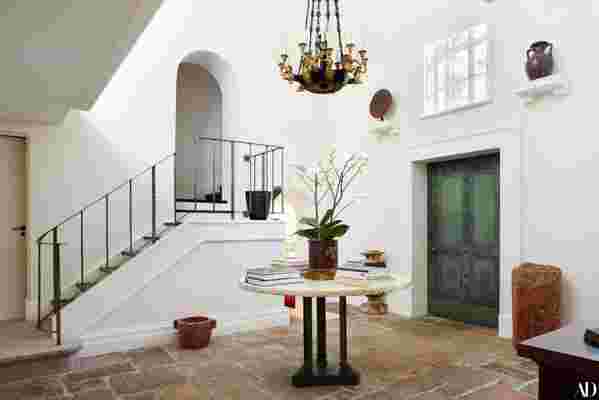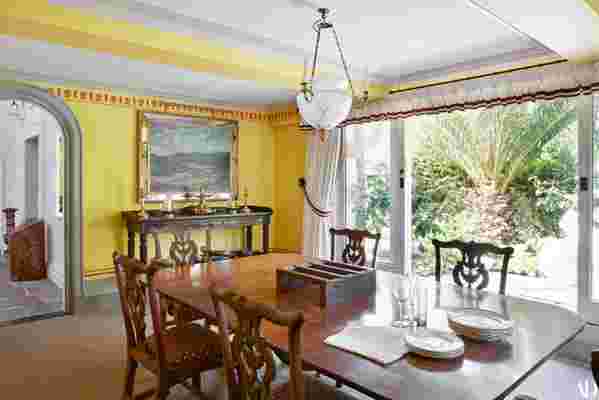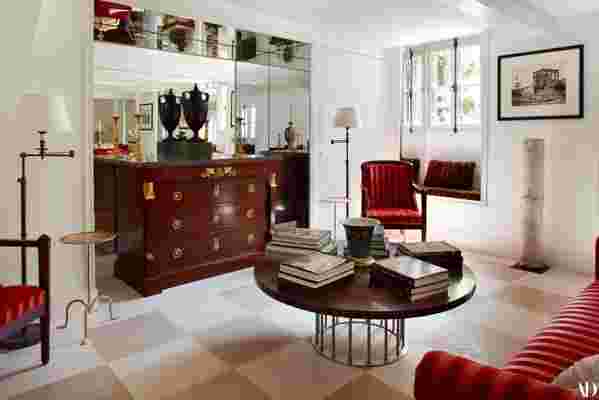When art connoisseur and collector Philip Hewat-Jaboor inherited two granite cottages on the island of Jersey, located in the tempestuous channel between the coasts of England and France, one might have found it difficult to imagine him living there. Nothing could be further from the drawing rooms of London and the international circuit Hewat-Jaboor inhabits. Known for his impeccable sartorial style and breadth of art-historical knowledge, the urbane Hewat-Jaboor is, he jokes, “doing all of this entirely by mistake.”
Hewat-Jaboor—whose love for discovering beautiful things started with his godfather, himself once a serious collector, and a Sotheby’s works of art class he took when he was 17—moved to Jersey about ten years ago. The cottages he inherited were slightly damp and dark but, in his words, “absolutely charming.” Although it was not really built to his taste, he wanted a home for all of his objects and enlisted his good friend, the architect and designer Pierre-Hervé Walbaum, to help him work things out. The two had worked together previously on Hewat-Jaboor's London place. Of Walbaum's design methods, Hewat-Jaboor says, “With him, everything is laid out absolutely, everything is drawn, and he will not let me get away with rushing things.”
The main rooms were rethought and transformed from somewhat awkward shapes to perfectly proportioned rectangles and squares. “You have to get the bones right,” says Hewat-Jaboor, whose main objective was to “put the objects I have in the best possible light.” This meant creating spaces for an extensive and ever-growing collection of late-18th-century and early-19th-century works made from porphyry and other hardstones. He and Walbaum decided to change the shape of the bedroom, and elevated the ceiling up into the roof. It is now a perfect square with an elaborate tenting effect. The dining room was also squared up and given decorative elements with historic precedent, such as the flat cornice and baseboard.

The main entrance was designed to display Hewat-Jaboor’s extensive collection of pieces made in porphyry (a hardstone). There is a column fragment from the first to the second century A.D., and on the central table is an early Louis XVI mounted piece from the collection of Daisy Fellowes. The doors are patinated to simulate bronze and the designs are based on the bronze doors of the Temple of Romulus in the Roman Forum.
The last room they touched was the main hall. The walls are covered with a paste ground with mica that shimmers in the light. The doors are modeled on the huge, bronze doors in the Temple of Romulus in the Roman Forum. Hewat-Jaboor wanted this room to have a “wow effect,” and with the shimmering surfaces and collection of porphyry, it does.
In 2008, the Hewat-Jaboor built a new structure across the garden, for his “demanding objects" and collection of books. This is now part gallery, part library; once again, most of the objects are in hardstones. "It is a soft room even if the objects are hard,” adds the homeowner, who originally wanted floor-to-ceiling bookcases—but Walbaum said no.
No discussion of the property would be complete without mention of the extensive gardens, which comprise a wildflower meadow across the road and a recently added pasture behind the house for animals. The garden, which has been neglected for some 20 years, are now beautifully planted with a scent garden, a reflective pool, and a pavilion tea house inspired by Chinese Chippendale motifs. There is always a cycle of something in bloom—from tree peonies to lilacs to acanthus.
From his idyllic slice of paradise, Hewat-Jaboor was heading off to London, where he hopes the Masterpiece fair (June 28 - July 4, 2018) will “have a real opportunity to shape taste and open up the world of objects.“ Asked about his advice for budding collectors? Hewat-Jaboor pauses, thoughtfully. “Handle objects, understand the material, and don’t be afraid of things.”


RELATED: An Art-Filled London Townhouse That Defies Convention at Every Turn
